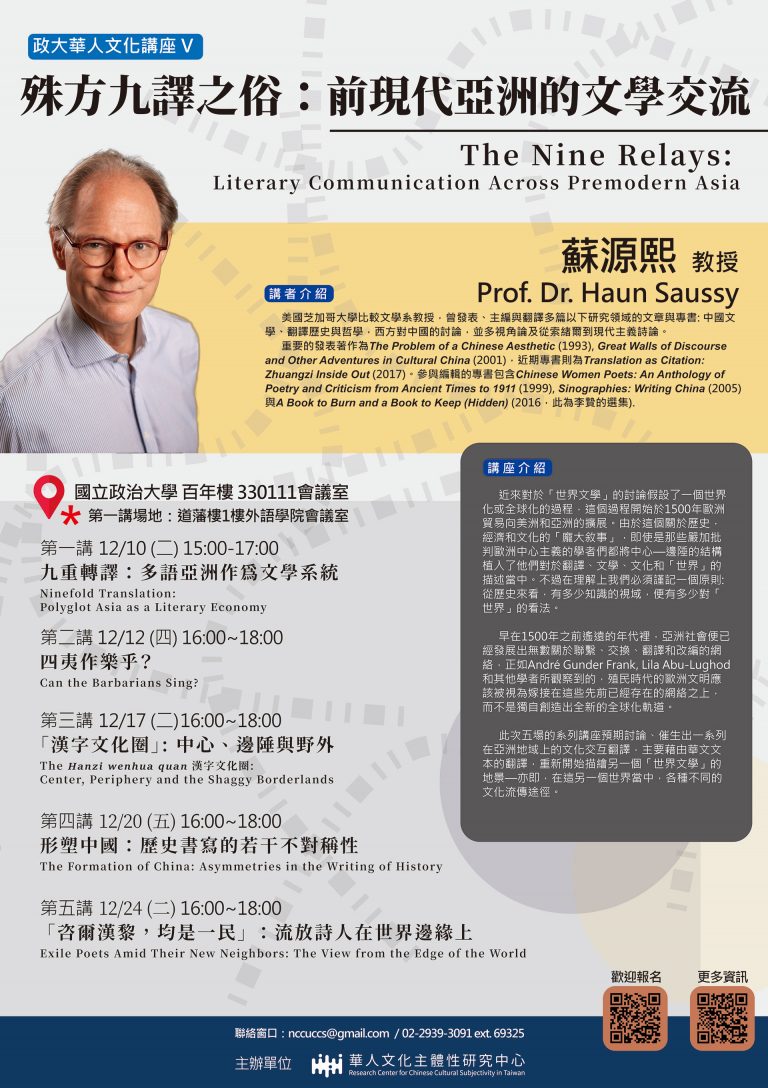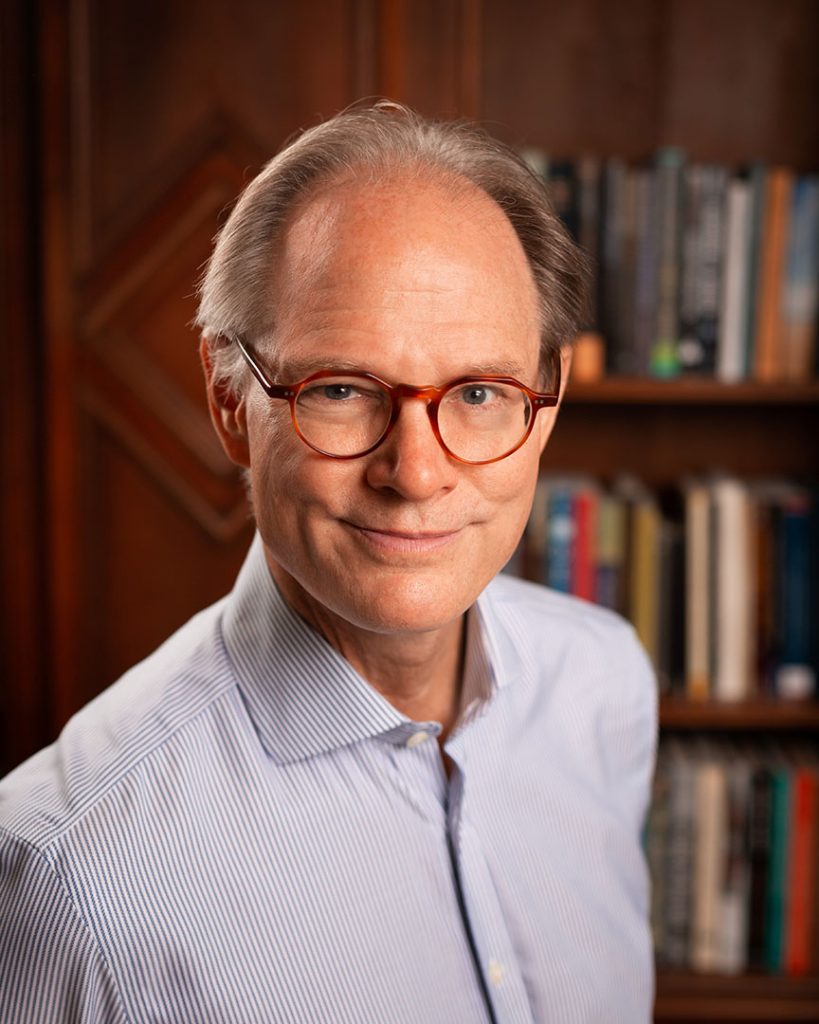講座簡介
Recent discussions of “world literature” assume a process of worlding or globalization that begins around 1500 with the expansion of European trade networks to include the Americas and Asia. As a result of this “grand narrative” about history, economy and culture, even scholars who are most critical of Eurocentrism import a center-periphery structure into their accounts of translation, literature, culture, and the “world.” But there are as many “worlds” in history as there have been horizons of knowledge. Long before 1500 CE, Asian societies had developed countless networks of contact, exchange, translation and adaptation. As André Gunder Frank, Lila Abu-Lughod and others have observed, colonial-era Europeans are better seen as having grafted themselves onto these pre-existing networks than as having created new globalizing circuits. This series of talks works through a series of examples of intercultural translation on Asian turf, generally through Chinese texts, in order to begin the work of mapping this other “world literature,” the many paths of circulation of culture in this other world.
近來對於「世界文學」的討論假設了一個世界化或全球化的過程,這個過程開始於1500年歐洲貿易向美洲和亞洲的擴展。由於這個關於歷史,經濟和文化的「龐大敘事」,即使是那些嚴加批判歐洲中心主義的學者們都將中心—邊陲的結構植入了他們對於翻譯、文學、文化和「世界」的描述當中。不過在理解上我們必須謹記一個原則: 從歷史來看,有多少知識的視域,便有多少對「世界」的看法。
早在1500年之前遙遠的年代裡,亞洲社會便已經發展出無數關於聯繫、交換、翻譯和改編的網絡,正如André Gunder Frank, Lila Abu-Lughod和其他學者所觀察到的,殖民時代的歐洲文明應該被視為嫁接在這些先前已經存在的網絡之上,而不是獨自創造出全新的全球化軌道。此次五場的系列講座預期討論、催生出一系列在亞洲地域上的文化交互翻譯,主要藉由華文文本的翻譯,重新開始描繪另一個「世界文學」的地景—亦即,在這另一個世界當中,各種不同的文化流傳途徑。


